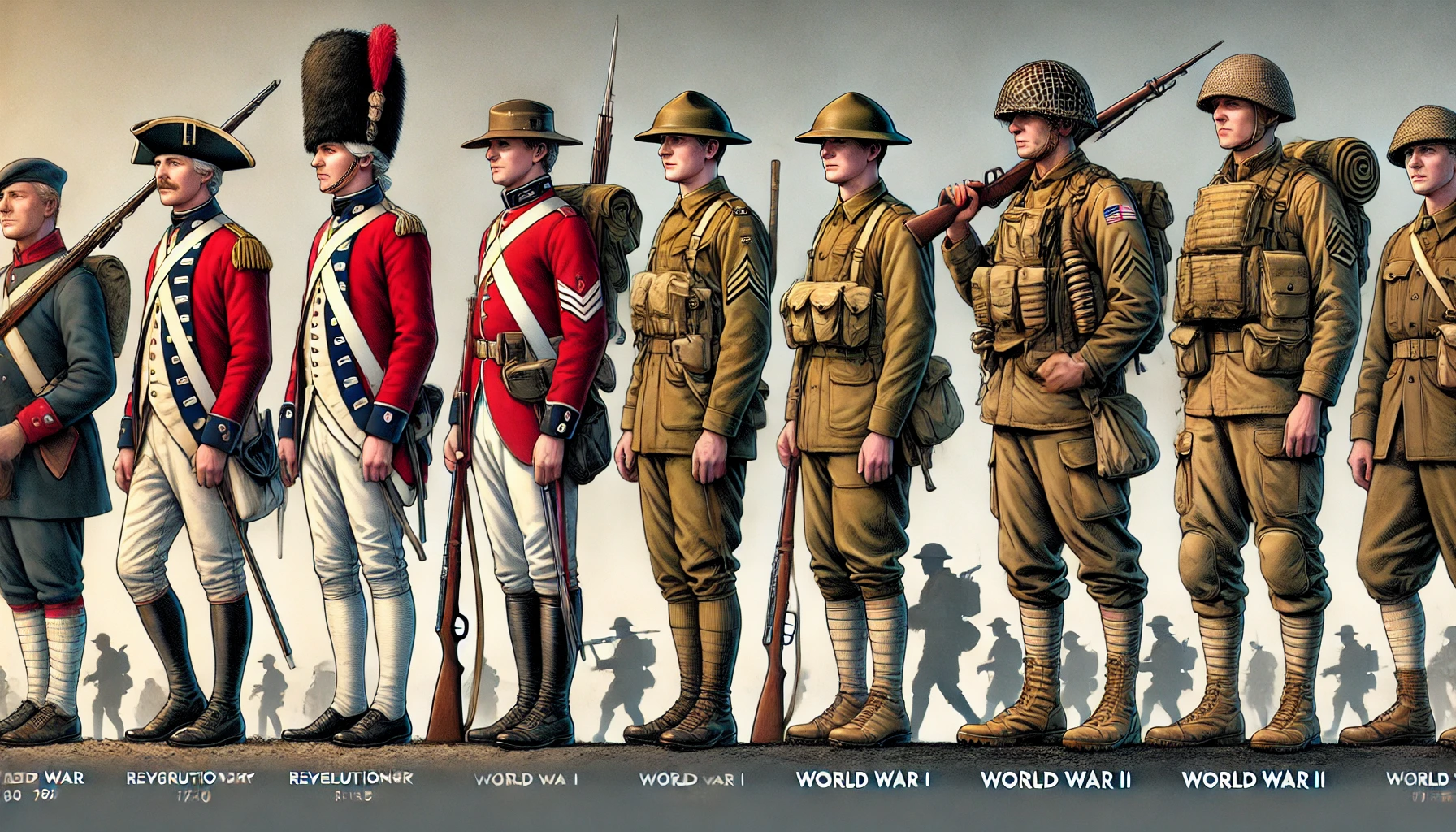
Evolution of Military Uniforms: From Revolutionary War to World War II
Published on Mar 12, 2025
The Evolution of Military Uniforms: From Revolutionary War to World War II
Military uniforms have played a crucial role in history, symbolising authority, unity, and national identity. From the distinct coats of the Revolutionary War to the utilitarian designs of World War II, uniforms have undergone significant transformations. This article explores the fascinating changes in military attire across different eras, with a special focus on World War I British uniforms and World War II army costumes.
Revolutionary War Uniforms: The Birth of a Military Identity
The Revolutionary War (1775–1783) was a defining period militarily. Uniforms during this era were primarily influenced by European styles, especially those of the British and French armies.
British Army Uniforms
- The British Redcoats were iconic, featuring bright red wool coats with white facings, knee-length breeches, and tricorn hats.
- Red was chosen to instil a sense of fear and unity among soldiers.
- Officers had more elaborate uniforms with gold trim and sashes, denoting rank and prestige.
American Continental Army Uniforms
- The Continental Army had a more inconsistent appearance due to supply shortages.
- General George Washington eventually standardized the uniform with blue coats and white facings to distinguish them from the British Redcoats.
- Militia members often wore hunting shirts, buckskin breeches, and tricorn hats, reflecting their civilian origins.
These early uniforms were more about symbolism than practicality, often proving uncomfortable and impractical in battle.
World War I British Uniforms: Functionality Takes Priority
Military uniforms had significantly changed by World War I (1914–1918). The battlefield environment of trench warfare required a shift from ornate designs to functional, protective gear.
Key Features of WWI British Uniforms:
- Khaki Service Dress: The British Army abandoned bright colours in favour of khaki uniforms to provide better camouflage.
- Puttees and Trousers: Soldiers wore puttees (woollen leg wrappings) and high-laced boots to protect their legs from mud and debris.
- Steel Helmets: The iconic Brodie helmet replaced soft caps, offering improved head protection against shrapnel.
- Webbing Equipment: The introduction of webbing belts and pouches allowed soldiers to carry essential gear, such as ammunition, canteens, and gas masks.
These uniforms prioritized durability, camouflage, and practicality, reflecting the brutal conditions of trench warfare.
World War II Army Costumes: Modernization and Standardization
World War II (1939–1945) saw further refinements in military attire, with uniforms becoming more standardized and function-driven.
British Army WWII Uniforms
- The Battle Dress uniform, introduced in the late 1930s, featured a wool tunic and trousers designed for mobility and warmth.
- Webbing gear was improved, with larger pouches for carrying ammunition and supplies.
- Helmets were upgraded with better liners for increased comfort and protection.
American Army WWII Uniforms
- The U.S. Army adopted the M-1941 and later the M-1943 field jackets, offering better insulation and weather resistance.
- Soldiers wore high-laced boots or jump boots (for paratroopers) for better support and mobility.
- The M1 steel helmet, with its distinctive shape, became one of the most recognizable symbols of the American soldier.
These uniforms reflected advancements in textile technology and military strategy, prioritizing comfort, adaptability, and effectiveness in combat situations.
Conclusion: The Ever-Evolving Military Uniform
The evolution of military uniforms from the Revolutionary War to World War II demonstrates a shift from ornamental and symbolic attire to practical, battle-ready gear. Each war brought innovations tailored to the needs of soldiers, shaping modern military uniforms into the advanced designs we see today.
Understanding these historical changes provides a deeper appreciation for the sacrifices made by soldiers and the strategic decisions behind their attire. Whether it’s the striking red coats of the British Army in the 18th century or the rugged utility of WWII field gear, military uniforms tell a story of adaptation, resilience, and national identity.
